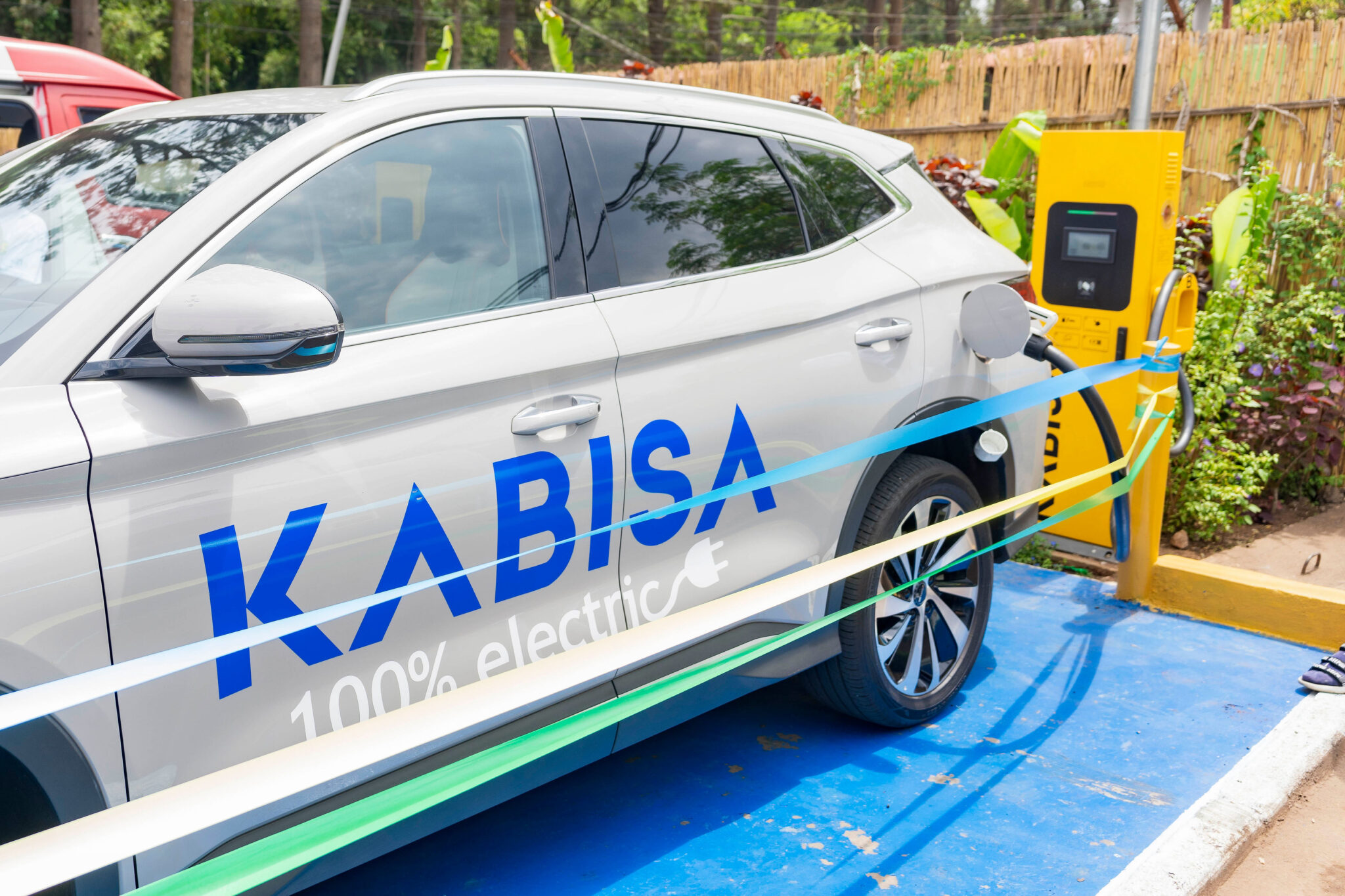By Diane NIKUZE NKUSI
Rwanda is aggressively pushing for e-mobility to combat rising air pollution and safeguard public health. With vehicle numbers increasing by nearly 12% annually and emissions emerging as a primary urban pollutant, the government has set ambitious targets for a cleaner future.
The plan involves converting 30% of motorcycles, 8% of cars, 20% of buses, and 25% of mini-buses to electric by 2030 a transition estimated to cost around $900 million.
The initiative is expected to yield significant reductions in greenhouse gas emissions, with projections suggesting reductions of up to 75% for motorcycles and over 98% when electric vehicles (EVs) are powered by renewable energy.
Overcoming infrastructure challenges for e-mobility in Rwanda’s cities
Fiscal and non-fiscal incentives are being deployed to drive this transition. However, a central question remains: can secondary cities across Rwanda truly benefit from e-mobility when they are still grappling with an inadequate public transport system and limited charging infrastructure?
Residents in secondary cities express deep skepticism about the feasibility of the e-mobility vision. Even now, many communities face challenges with petrol-fueled vehicles that struggle to serve all areas effectively.
In Huye District, for example, residents report that public transport options are severely limited.
Christelle Umwiza, a resident in Huye, explained that travel and businesses between neighboring sectors are extremely difficult due to limited bus services.
“Routes only connect Kigali to Huye and then selectively to Nyamagabe, Nyaruguru, and Gisagara, leaving areas like Mbazi, Cyarwa,… unserved and forcing residents to rely on costly motorcycle taxis. Poor road conditions flooding during rain and a lack of proper asphalt even near the city further worsen the situation. Until roads and reliable bus services, first with fuel and later electric, are improved, the promise of e-mobility will remain out of reach.” She said.
Reiterating similar concerns, Faustin Karemera from the same district noted, “We know electric vehicles are good for the environment, but even petrol-fueled buses are not enough. How can we think of e-mobility when we lack basic public transport options?” Such observations underline a critical gap in Rwanda’s urban planning efforts: the need for integrated transport solutions that can support a wide-ranging shift to electric mobility.
Electric motorcycle riders, who form a significant part of Rwanda’s urban transport fabric, are also facing substantial challenges.
Emmanuel Bigirimana, a motorcycle taxi driver in Muhanga, described the operational difficulties: “We have only two charging stations in the entire city, one self-service and one operated by an agent. This is a major challenge for us. Additionally, our motorcycles currently have a battery range of just 70 kilometers, which is insufficient for the rural trips we often undertake. Ideally, we would need a range of 120 to 150 kilometers.” Bigirimana said.
To know the extent of the issue, Umuringa News visited, Rusizi district, where we found a house near the new bus station that charges electric motorcycles.
However, electric motorcycles are not popular due to negative perceptions from motorcyclists, and there are infrastructure issues, in Rusizi, there is only one place where batteries can be charged.
Mathias Nahayo, who owns an electric motorcycle in Rusizi, says his colleagues often mock him, claiming the motorcycles are of poor quality and even saying their brakes are like those of old bicycles.
“Many of our colleagues criticize these electric motorcycles, telling passengers they have no brakes, making it hard to find passengers, except those from Kigali who are more familiar with them.” He added.
Nahayo also mentioned that there are only around 10 electric motorcycles in Rusizi out of 5,000 motorcycles.
He noted that battery charging is still a major issue, as there is only one charging station, which is not sufficient, especially since the motorcycles’ batteries last no more than three hours. “The big problem would also be transport inefficiency even if the mindset of moto riders would change significantly,” Nahayo worries.
As for electric cars, no one in the town owns or uses one and local residents confirm that electric cars have not yet arrived in the area.
In other secondary cities, such as Nyagatare and Rubavu, electric motorcycles and cars have not yet arrived. Additionally, residents in these areas have raised concerns, wondering why the development of environmentally friendly transportation (e-mobility) has not reached them.
“I currently drive a fuel-powered motorcycle, but based on our experience in Kigali, we’ve found that charging stations are inadequate. Access to fully charged batteries is also a significant concern. As e-mobility expands to our district, it may be essential to install charging stations in every center, especially since we have numerous clients who frequently travel long distances,” says Martin Ntasingwa, a moto driver and resident of Nyagatare.
“In Rubavu district, a tourism-based city with cross-border movement and business activity, there are no electric motorcycles or cars. The continued use of fuel-powered vehicles for cross-border transportation may exacerbate the problem of gas emissions, harming our planet and the air we breathe,” said Yvette Umutoniwase, a mother of two and bar owner in Rubavu district.
Inadequate charging infrastructure and operational inefficiencies in Kigali
Even in Kigali, where infrastructure is relatively more developed, the situation is not ideal.
Jean Claude Mbonabucya, an electric motorcycle rider, lamented, “Charging stations exist, but they are not fully functional. More often than not, we receive half-charged batteries that undermine our efficiency. I suffered from respiratory issues while driving petrol motorcycles, and while I fully support e-mobility for health and environmental reasons, operational inefficiencies remain a significant setback.”
Gilbert Munyurwa, a Kigali-based driver with experience operating various types of electric vehicles, shared his insights on the challenges faced by drivers in the city due to the limited availability of charging stations.
“We often encounter difficulties due to the limited number of charging stations. When you arrive at a station, you find all the charging bays are occupied. In these situations, you are left waiting—not just for others to finish, but also during the time your own car is charging,” explained Munyurwa, a driver from Kigali.
“I drive various types of cars, some of which can travel 400 to 500 km on a full battery. The real issue lies with vehicles that have shorter battery ranges, typically around 200 km, especially those carrying heavy loads,” he added.
Investors’ concerns on e-mobility adoption challenge
Donald Kabanda, Chairman of Rwanda E-Mobility and CEO of Rwanda Electric Motors Ltd, said that the absence of charging points in some areas could discourage people living or traveling there from purchasing e-mobility vehicles.
“If someone is planning to buy a vehicle, they might ask themselves if they will be able to charge it wherever they go. They might think, ‘Will I be able to charge it when I go to the countryside?’ If the answer is no, they may decide to buy a fuel-powered, non-electric vehicle,” he said.
Efforts to bolster Rwanda’s e-mobility ecosystem are underway, with organizations like the Global Green Growth Institute (GGGI) playing a pivotal role.
GGGI drives e-mobility integration
GGGI is actively integrating e-mobility into Rwanda’s green urbanization strategy, recognizing electric vehicles as a cornerstone for sustainable infrastructure development.
You Shik Kim, a Sustainable Mobility Specialist at GGGI, explained, “Electric vehicles are a cornerstone of Rwanda’s sustainable infrastructure development. We are working closely with the government and private sector to accelerate e-mobility adoption through policy advisory, investment mobilization, and public transport optimization. Establishing the right infrastructure and increasing public awareness are essential to drive adoption and create job opportunities in this emerging sector.”
GGGI’s studies on grid capacity, charging infrastructure, and electric bus deployment have provided critical insights for the government, though challenges remain, particularly in scaling these initiatives beyond Kigali.
Benefits and challenges according to REMA
Rwanda Environmental Management Authority (REMA)’s e-mobility department offers additional perspective on the benefits and hurdles associated with this transition. The department stresses that the shift from fossil fuel-powered vehicles to EVs is a key strategy for reducing harmful emissions.
According to REMA, replacing internal combustion engines with electric alternatives significantly lowers emissions of greenhouse gases and pollutants such as nitrogen oxides and particulate matter. They further note that Rwanda’s renewable energy mix—dominated by hydropower—enhances energy efficiency and reduces reliance on imported petroleum, thereby strengthening the nation’s energy security.
“The limited presence of charging stations in secondary cities is a significant hurdle,” REMA’s e-mobility department stated.
Without sufficient infrastructure, areas outside Kigali remain dependent on conventional vehicles, perpetuating harmful emissions and undermining public health benefits.
MININFRA pushes for e-mobility growth despite challenges
The Ministry of Infrastructure (MININFRA) is also deeply involved in the drive toward a greener transport future. MININFRA has outlined a long-term strategy to promote the adoption of e-mobility, focusing on both private and public transport across Rwanda’s secondary cities.
The ministry’s Strategic Paper on Electric Mobility Adaptation, published in April 2021, provides a comprehensive roadmap that includes a range of fiscal incentives such as tax and duty exemptions, as well as non-fiscal incentives aimed at accelerating EV adoption.
According to Theogene Dusabumuremyi, the Acting Director General for Transport at the Ministry of Infrastructure (MININFRA), the ministry is taking proactive measures to address the critical issue of insufficient charging infrastructure. One of the key challenges for potential electric vehicle users is alleviating range anxiety.
To tackle this, MININFRA has developed a comprehensive Electric Vehicle (EV) Charging Infrastructure Masterplan. This strategic initiative outlines the ideal locations for charging stations throughout the country, including Kigali, satellite towns, secondary cities, and major road corridors.
Mr. Dusabumuremyi emphasized that the ministry is actively engaging private investors, development partners, and financial institutions to accelerate the rollout of these facilities, ensuring that Rwanda’s transition to e-mobility is both sustainable and accessible to all cities.
However, MININFRA also acknowledges the significant challenges that investors face in the burgeoning e-mobility sector. High initial capital costs for EVs and the associated infrastructure remain a barrier, compounded by limited access to finance for suppliers and local assemblers.
Investors are further deterred by persistent range anxiety among users due to the current scarcity of charging stations.
Additionally, the fast-evolving nature of EV technology has left some potential buyers in a state of hesitation, as they wait for the technology to mature. The shortage of skilled mechanics capable of repairing EVs only adds to the complexity.
MININFRA is addressing these issues by advocating for financial support from banks, engaging with private sector partners, and collaborating with development agencies.
“We are committed to building a robust EV ecosystem that mitigates these challenges and fosters sustainable growth,” Dusabumuremyi stated, highlighting a proactive approach to overcoming these hurdles.
Expert view
Beyond the immediate operational challenges, the successful integration of e-mobility in Rwanda promises a host of long-term benefits.
Experts predict that once the infrastructure is in place, Rwanda will witness significant reductions in greenhouse gas emissions, improved air quality, and greater energy independence by reducing reliance on imported fossil fuels.
The transition is also expected to catalyze job creation in manufacturing, infrastructure development, and maintenance, which in turn could lead to a more efficient urban transport system and a sustainable urban environment overall.
However, these benefits will remain largely aspirational unless urgent investments are made to expand public transport and upgrade road infrastructure, particularly in secondary cities.
Overcoming challenges to realize Rwanda’s e-mobility potential
Rwanda’s ambitious e-mobility initiative holds tremendous potential for transforming urban landscapes and improving public health. Yet, the realization of these benefits is contingent upon overcoming a series of infrastructural and operational challenges.
While Kigali is making strides in embracing electric vehicles, secondary cities remain largely on the periphery of this green revolution.
Comprehensive and coordinated efforts from government agencies like MININFRA and REMA, along with support from international partners such as GGGI, are essential to building a robust e-mobility ecosystem.
With enhanced public transport services, expanded charging infrastructure, and significant investments in road improvements, Rwanda could soon see its vision of a cleaner, more sustainable urban future become a reality.
As Rwanda navigates this complex transition, the collective challenge is clear: ensuring that the transformative promise of e-mobility reaches every corner of the country, thereby safeguarding both the environment and public health for generations to come.
To meet its 2030 goals of 20% EV adoption and a 38% reduction in emissions, Rwanda must focus on three priorities: policy support for charging operators, upgrading the power grid, and running public education campaigns. These combined efforts will help the country move closer to its ambitious target.
According to statistics from the Rwanda Revenue Authority, the number of hybrid cars imported into Rwanda rose from 28 in 2021 to 6,660 in 2024, while the number of purely electric cars grew from 19 in 2020 to 512 in 2024.














